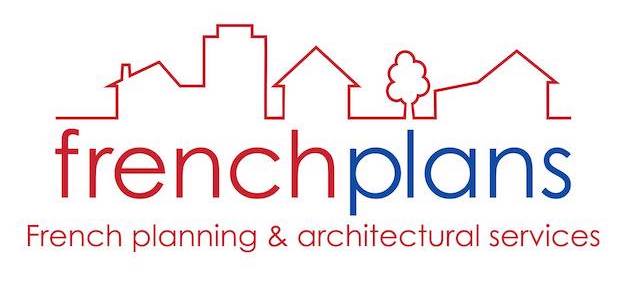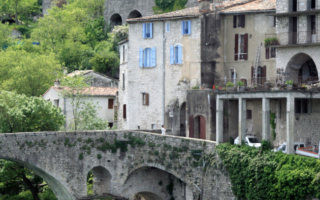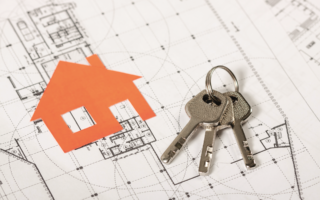Building and Renovation in France: Protected Zones, Listed & Heritage Buildings
Essential Reading


Almost all renovations, extensions, and external changes to your French home will require planning permission, and the regulations vary greatly depending on your local commune. If you own a listed or heritage building (or a property in close proximity) or if your French house lies with a protected planning area, there are additional rules and regulations to consider. Here’s what you need to know.
What Is A “Protected” Planning Zone in France?
In France, many towns and villages (or certain areas within them) carry protected status, and although the terminology is currently changing, the zones are still commonly known as being within the “ZPPAUP” (zone de protection du patrimoine architectural urbain et paysager). This means that properties or land within these zones are subject to specific planning constraints in order to maintain the aesthetic appearance, architectural relevance, and/or historical importance of the area.
Land or property within a protected zone and possibly affected by these regulations include:
- Any property within 500 m of a historic building or monument – e.g., church or chapel, ancient dolmen, etc.
- Property within a national park
- Listed buildings – as in the UK, there are different types of listing – some affect only the exterior, whilst others apply to the interior. It would be very unusual to have an internal listing without an accompanying external one, but the reverse is more common.
How Do I Find Out If My Property Is Within A Protected Zone?
Owners can initially check with the Mairie (local town hall) or planning office, but the notaire handling the purchase of a property should also investigate this as part of the legal search process and ensure the new owner is aware of the issues prior to completion.
Owning A Listed Building in France
All heritage and listed buildings in France are subject to specific regulations which affect any construction or renovation works. As in the UK and other countries, there are different types of listing – some refer only to the exterior, whilst others apply to the interior. It would be very unusual to have an internal listing without an accompanying external one, but the reverse is more common.
To complicate matters further, it is usual for regional variations to exist, such that in one area, a particular requirement may apply, whereas in another area, matters are different. Much depends on the specific reason for the listing – it may, for example, be just one architectural feature of the property (stone arch, mullion windows, etc.), or it could be a range of features, or simply the original use of the building which results in the listing or protected status.
The authority/authorities (there could be several!) responsible for ensuring the compliance of building works to listed buildings also varies from one region to another – much depends on the precise nature and use of the building, the architectural influences of the area, the importance of the building itself, or perhaps where it is in a world heritage zone (UNESCO site, etc.).
Specific requirements can initially be discussed with the local town hall (Mairie) or the planning office, and if necessary, request a meeting with any of the other authorities who have a part to play in the decision-making process.
Owning A Property Close To A Listed Building
As a general rule, any property that is within 500 metres of a listed or protected building is affected by that proximity. Examples are churches, cemeteries, historic monuments, dolmens, etc. In some cases, the entire centre of a town or village carries protected status, even affecting those properties that may be more than 500 metres from any individual heritage building.
Under these circumstances, owning a property within the protected area will mean that any renovation or construction must be authorised by the various authorities. Conditions will vary from town to town and may not be as stringent as would be the case for a specific listed building, but nevertheless, can prove challenging. As a rule, it is only the external appearance of a property situated near to a listed building that is affected.
Applying for Planning Permission: Protected Zones & Listed Buildings
Many towns and villages in France are governed by one of several types of planning framework – the most common is called a “PLU” (plan local d’urbanisme). This framework sets out in detail the general planning considerations for various zones within the town. Where there is some form of heritage or protected status, this local planning framework is usually issued in conjunction with other regulations, such as the ZPPAUP mentioned above, and all regulations need to be taken into account.
Prior to undertaking any works on a listed building or a property within a protected zone, it is essential to obtain authorisation through one form of planning application or another. As a rule, this will be a demande depermis de construire, even where under normal circumstances, a simpler déclaration préalable could suffice. This allows the planning authority and other agencies to best assess the works concerned before issuing their response. Although the precise requirements will vary from property to property, it is best to remember that any change to the external appearance of such a building cannot be undertaken without permission. Equally, if there is an internal listing for a building, then whatever that applies to cannot be altered either without permission.
Your Planning Application Dossier
The planning application and a complete dossier must be submitted to the Mairie in the first instance, who will pass it on to the various authorities in order for each to review the details. Because of the potential number of different departments involved, the process can take considerably longer than a “normal” application – up to six months in some cases.
All work for which permission is needed will be subject to approval by the regional architectural office, known as the “ABF” (architecte de batiments de France). If the ABF do not approve elements of the work, then they will either approve the application subject to certain conditions, or refuse it altogether, so it is important to take care when completing the planning dossier, and to take account of local requirements. A meeting with the local ABF can be arranged prior to the submission of a planning application to ensure it conforms with the regulations.
If an owner of a property affected by one or more of the above scenarios requires help and advice, professional advisors should be sought to obtain copies of regulations and undertake the complete planning dossier (as a rule, dossiers can only be prepared and presented by qualified, French-registered architects). Discussions with the relevant authorities can then take place to ensure all regulations are taken into account.
Renovating Protected or Listed Buildings in France: Case Studies
Below are some examples of approved renovations to listed buildings in France, showing some of the factors that may be given priority during the application process.
Case Study 1: Mayenne Listed Building
Planning permission for the renovation of a very old listed (internal and external) building in a town in theMayenne, was subject to retaining the existing staircase and fireplace, even though the staircase was in very poor condition. The windows were also in a ruinous state and could only be replaced with single glazed units with thin, heritage-style glass. Under these circumstances, thermal values (which are otherwise important to consider) become very much a side issue, and listing requirements take priority over all others.
Case Study 2: Brittany Chapel
A planning application to replace a plain-glazed arched window in a chapel in Brittany had to include a report justifying the design and content of the replacement stained-glass unit. The reasons for the choice of the subject matter of the window had to be assessed and accepted before permission was granted – i.e., the relevance of the design became the most important factor.
Case Study 3: Medieval Tower
A medieval tower forming part of the original ramparts of a walled town included many ancient stone features and was highly protected architecturally. The project included works to the exterior, which would have partly hidden some of the decorative support stones. The regional architectural officer (from the office of the Architecte des Bâtiments de France or ‘ABF’) refused any construction that affected the visibility of the ancient parts of the wall, even though a former development of the property in the late 19th century was already hiding much of the original features of the wall. Internally also, no works could be carried out that affected or altered the walls of the tower.
Case Study 4: Property Close to a Listed Church
The owner of a property situated within 500 m of church in a small town in Brittany wanted to replace the old “Georgian” doors and windows with stained timber fully-glazed versions. The regional architect decided that the windows and doors had to retain the appearance of the existing ones, keeping the horizontal and vertical bars, but also that they had to be painted a light grey colour. No other colour was acceptable.
Other properties in the immediate vicinity boasted a variety of styles and colours – white PVC, stained timber, etc. However, the fact that neighbouring properties may have had replacement windows in the past (either illegally, or prior to the current protected status of the town), had no influence on the requirements of the authorities at the time of the current application.
Case study 5: Loire Valley Property
In a town in the Loire region, a property owner wanted to fit new external shutters to the windows, and the authorities insisted on them being painted “ochre-brown” – the traditional colour in the area for external features of this nature.
Building or Renovating Your French Property?
Whether you’re building an extension, renovating an old farmhouse, or designing a new build property, FrenchEntrée is here to help! Check out our Essential Reading articles for everything you need to know about planning permissions, building regulations, and renovation projects. Or, for professional help, advice and assistance at all stages of your building or renovation project, get in touch with our partners at French Plans.
Article by Arthur Cutler at French Plans.

Share to: Facebook Twitter LinkedIn Email



